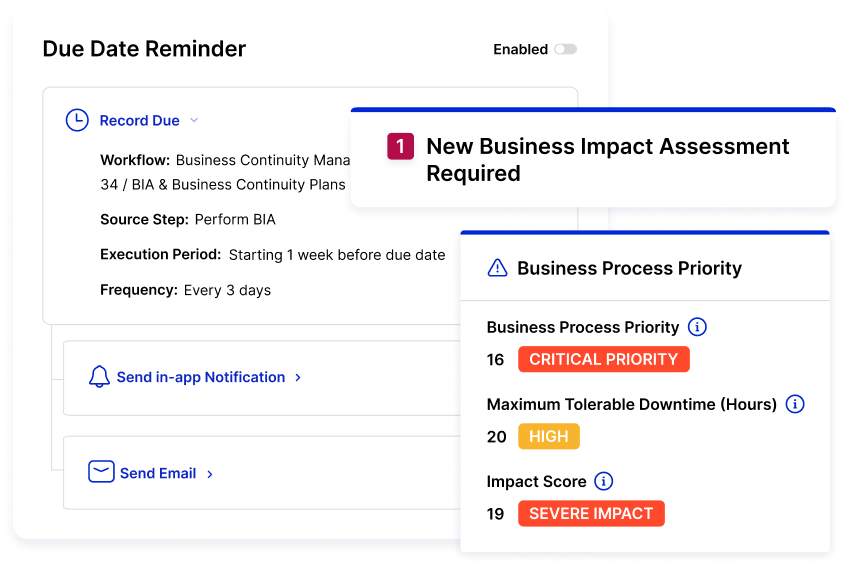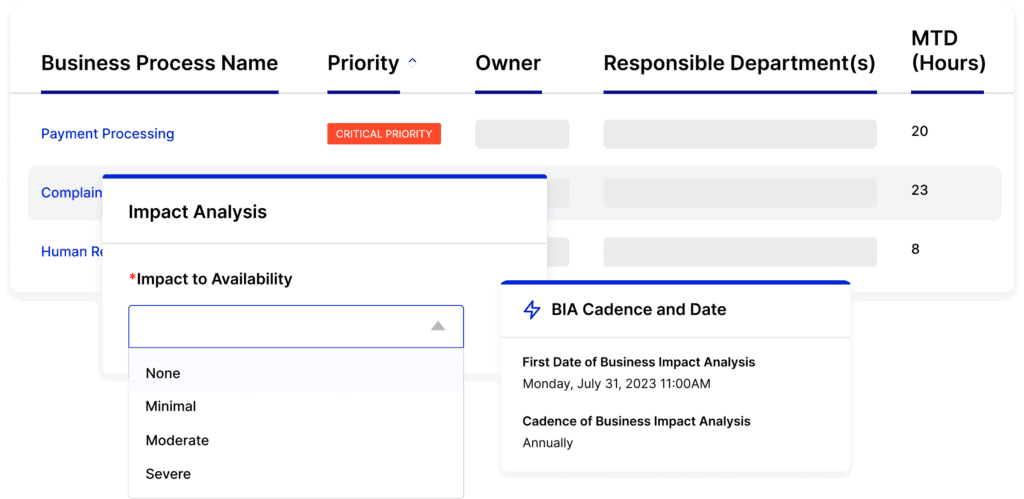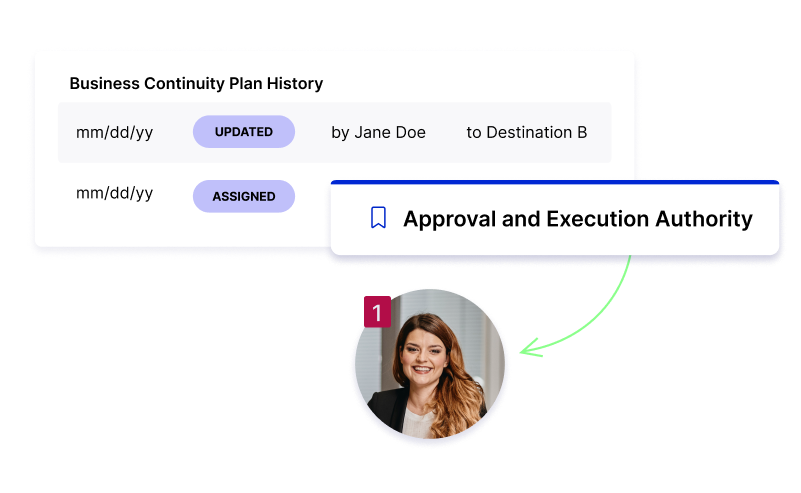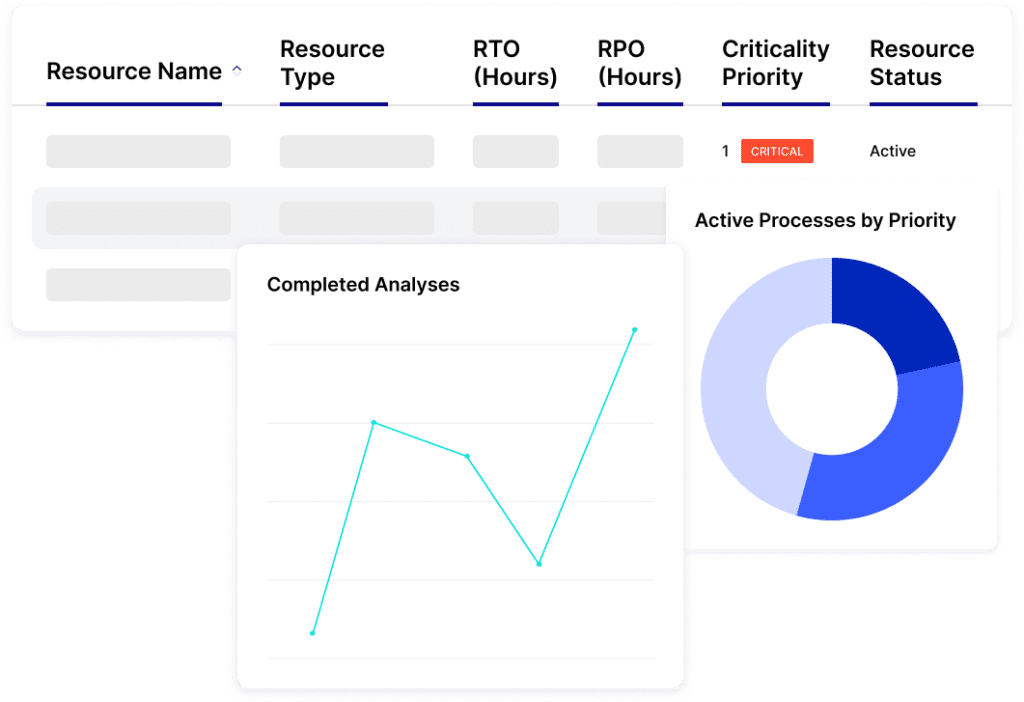Incident Management
Built to help you manage every incident from beginning to resolution, and monitor the health of incident response…
![[2024-04-12-06-17-48]___Business-Continuity-Planning-App-Image-Updates-7](https://www.logicgate.com/wp-content/uploads/2020/12/2024-04-12-06-17-48___Business-Continuity-Planning-App-Image-Updates-7-800x566.png)
Risk Cloud® is a no-code risk and compliance platform that scales and adapts to your changing business needs and regulatory requirements. Plan and track your business continuity procedures in one centralized platform and enable your organization to stay operational in the event of a major disruption or disaster.
Operating environments and environmental conditions have become increasingly volatile. Avoiding disruptions, downtime, and loss requires effective business continuity planning.
Risk Cloud's Business Continuity Management Application takes inventory of your organization's critical processes and resources then automates your recovery plan so you're prepared to navigate whatever curveball comes next.
Simplify business continuity planning and deliver data-driven program insights with Risk Cloud’s Business Continuity Management Application. You’ll have everything you need to:


Measure process criticality with the help of easy-to-complete forms that assess potential impact of process disruption on your organization. Link resources to identify dependencies and potential points of failure—then leverage insights to prioritize response activities in the event of disruptions.
Spend less time tracking down documents, sign-offs, and open tasks. Risk Cloud centralizes business continuity plan drafting and approval and dynamically links related business processes, assets, and risks. Ensure plans are kept up to date and reflect what is required to protect your organization by automating review, testing, and remediation workflows.


Track the status and effectiveness of business continuity plan executions, monitor critical assets and processes, and keep stakeholders informed from a single platform. Enhance contingency efforts by connecting the right people with the right information via role-based dashboards that highlight recovery priorities and resource requirements.
Built to help you manage every incident from beginning to resolution, and monitor the health of incident response…
Risk Cloud’s Cyber Risk Management Application unlocks a connected view of assets, threats, and vulnerabilities so you can…
Risk Cloud’s Third-Party Risk Management: Standard Application comes equipped with a purpose-built questionnaire to help you holistically and…
